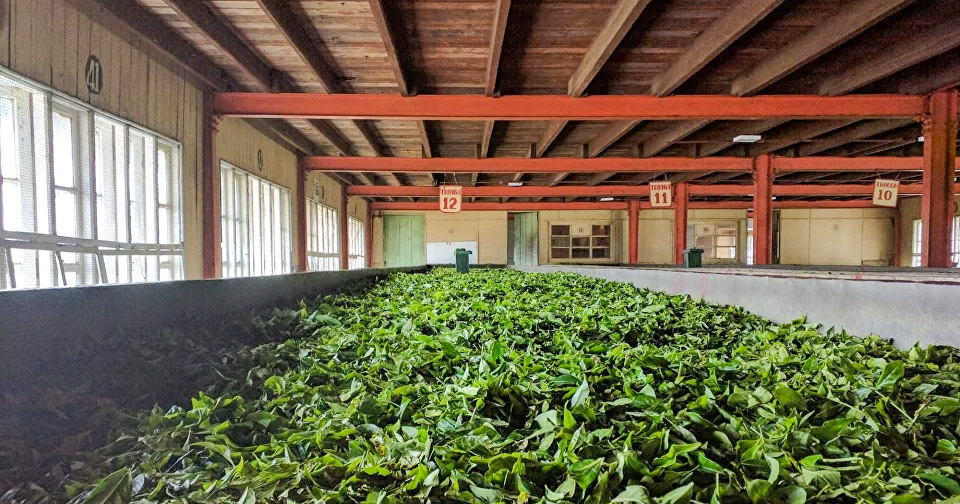Tea Production Technology: From Harvesting to Sorting
How premium teas are made, from the very first bud to the final cup? At Cantata, you can buy tea online in Dubai with fast delivery across the UAE. In the technology of tea production, the following main stages can be distinguished:
Harvesting: Manual and Mechanical
- Manual harvesting is used for high-mountain and collection-grade teas.
- Machine harvesting is used for more mass-market black teas.
The most valuable raw material is the bud (tip) — an unopened tea leaf. It gives the infusion a delicate honey flavor and aroma.
The second highest quality material is the flush — a bud and two young leaves. This combination has a multifaceted aroma and taste and is used for premium teas like oolong tea.
Withering: Removing Moisture
The tea leaves are spread under shelters for several hours, and under the influence of heat, excess moisture evaporates. As a result, the leaves become elastic and ready for further processing. This process is critical to the quality of green tea, pu-erh tea and classic tea.

Types of Tea Rolling
Twisting tea leaves significantly increases the shelf life of tea leaves. The tighter the tea is twisted, the higher its extractivity (ability to give the drink the maximum amount of useful substances). Thus, the most intense and strong teas are obtained from tightly twisted leaves ("gunpowder"), and the mildest in taste - from weakly twisted leaves (for example, "Tai Ping Hou Kui").
Tied Teas
Tea tips (sometimes with flowers) are tied together with silk thread. Unfolds into a "flower" during brewing.
Flat Rolling
The leaf becomes a glossy, dense plate that breaks when bent.
Gunpowder
Leaves rolled tightly into small pellets, resembling gunpowder.
Sencha
Rolling along the longitudinal axis.
Pearl-Shaped
Leaves hand-rolled into small balls (pearls).
Machine Rolling
Depending on the camellia variety (Chinese or Assam), results in more airy (Darjeeling) or dense "stick-like" (Assam, Kenya) leaves.
Fermentation
Fermentation is a process where tea leaves change their color, composition, taste, and beneficial properties.
- Leaves are kept in a humid, cool environment.
- Pigments are released during oxidation, coloring the leaves dark.
- Fermentation lasts from 2 to 8 hours.
- Minimal fermentation is needed for light oolongs, where only the edges darken, making the tea semi-fermented.
This process is key to creating rich black teas.

Sorting
After processing, tea is sorted as it may crumble during production. One batch yields four different tea types:
| Type | Description | Example |
|---|---|---|
| Large Leaf Tea | From whole Camellia assamica leaves, even if processed mechanically. | |
| Small leaf | Small-leaf tea consists of natural “marriage” during the production of large-leaf teas. | Cocoa Truffle Flavored Black Tea |
| Seeding | The mulch is small fragments of tea leaves. | Not used in Cantata |
| Fannings (Dust) | The smallest leaf particles, used in simple tea bags. | Not used in Cantata |
It is essential to sieve tea carefully to avoid mixing dust with whole leaves. Dust presence increases bitterness and astringency in the infusion.
The more qualified manual labor involved at each production stage, the higher the tea's quality and price.






















What do you think about this?